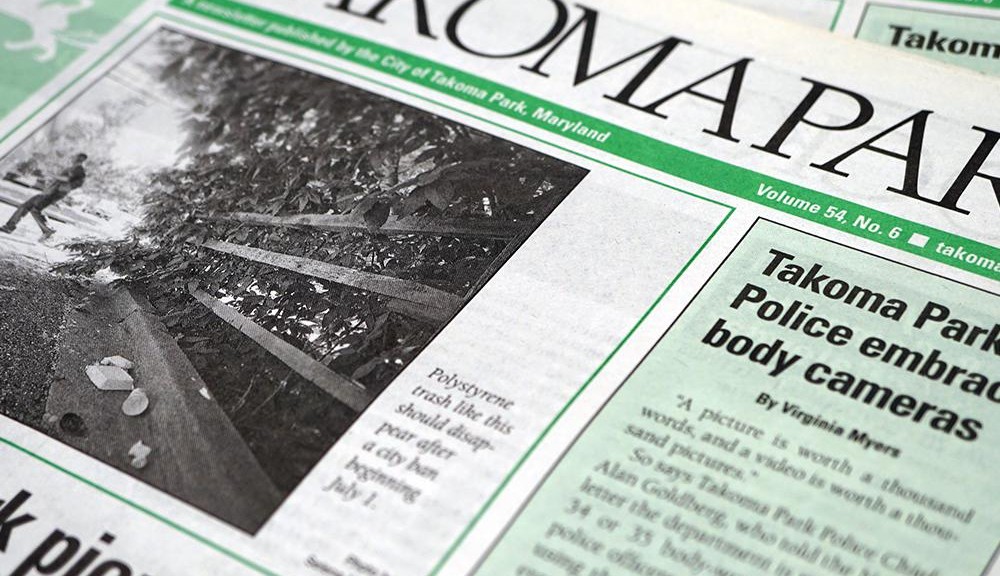By Morgan Fecto
As Takoma Park students of all ages head back to class this month, they might draw inspiration from local authors who have dedicated much of their time and energy to creating books, from which many may have learned a lesson or two.
“Among the writers I know who live in Takoma Park, [they] chose to live here because it is a ‘real place’ first – meaning, there’s a center to the city, the library,” wrote Takoma Park Poet Laureate Merrill Leffler in an email.
Many authors in and around Takoma Park see the city as a literary hub. It’s a place for writers to work and share their work with a community that’s a captive audience. “[There’s a] diverse population of warm, friendly residents and friends who unknowingly support my non-traditional career choice by making me feel welcome over and over again,” said Lisa Ellis Williams, who wrote an advice book for newlyweds called Wife School.
Takoma Park author Chad Boggan, who recently self-published his second sci-fi novel The Seed, echoed Ellis’ feelings: “I would say it’s made-to-order for writers. I put a ‘Thank You’ to Takoma Park in my book. It’s the general creative and passionate spirit of the area, and the fact that people believe in their causes; that’s important to me.”
Hank Cox, Takoma Park local and author of For Love of a Dangerous Girl, said: “Takoma Park is generally supportive of writers in that residents tend to be scholarly and literary. They read and appreciate books.”
And this appreciation extends to literary efforts by local authors. According to Ellen Arnold-Robbins, the director of the Takoma Park Maryland Library, “because we are independent, we have the flexibility to acquire anything that reflects community interests or wishes, and do so quickly.”
Arnold-Robbins said that many local authors have held programs at the library, and that some come in to write. The list of books that she calls up when she searches “Takoma Park authors” in the library’s database is lengthy.
Included on this list is Megan Scribner’s poetry anthology Leading from Within. Scribner is a local writer, editor, and for seven years she and her neighbor Allison Kahn have organized the Takoma Park Book Fair. “In some circles, she is known as Saint Megan,” Cox said.
Scribner and Allison Kahn started organizing the annual Takoma Park Book Fair after they realized they’d both published books. “We wondered, ‘How many of our other neighbors have published books?’” Scribner said. “We found that there’s a community of authors, and the more we show up for each other the better that makes it.”
They held last December’s book fair at Trohv and accepted 30 writers, which was five more than in previous years. The fair recently allowed Silver Spring, D.C., Bethesda, and Kensington authors to apply too, and now Scribner’s mailing list includes 101 authors.
“When we started the fair, it was about getting the authors’ work out there, but it’s been very gratifying to give authors a way to display their work and talk to people and get feedback,” Scribner said. “We’ve had poetry and historical fiction, graphic novels and more political or environmental-cause oriented books.”
There are venues for authors to share their work with the City, but they still face the same obstacles that writers do in other parts of the state and country. Pleasing a publisher, not having a publisher, finding time to write between the demands of work and family, writing something both novel and relevant, and promoting a finished book are just a few of the challenges.
“Once I found out how much I was going to have to do to catch the interest of publishers, I thought I might as well do the work and reap the benefits. If I’m going to average 500 sales, then I could do that myself,” said Boggan, who is self-published. “I haven’t hit that mark yet. My wife and neighbors say I have to put more energy into promoting the book, but I lagged because I used all my energy writing.”
Just as the urge to create continues to inspire local writers in spite of setbacks, a love of books inspires the Takoma Park community. Visit the Takoma Park Book Fair Facebook page for more about the next fair, and look online for the latest from these Takoma Park authors.
This article appeared in the September 2016 edition of the Takoma Park Newsletter. The Takoma Park Newsletter is available for download here.

